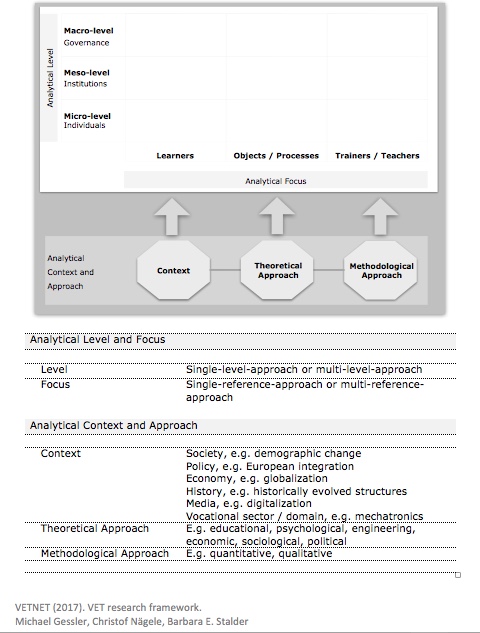On the 30th of November and on the 1st of December our EU-funded Learning Layers (LL) project had its third annual review meeting at the European Commission premises in Luxembourg. As usual, the consortium had gathered in advance to finalise the presentations and to ensure that we pass a coherent message. The presentations on our work in the pilot sectors took place on the first day of the meeting. On the second day we had shorter presentations on the development on the technical infrastructure and on the exploitation initiatives. Then the reviewers finalised their feedback and presented their main points to us in the final session. This first post gives insights into the presentations of the first day. The second post discusses the presentations of the second day and the comments of the reviewers.
The coordinator’s overview
In the beginning Tobias Ley (TLU), the scientific coordinator, recapitulated some key facts of the development of the project during the three years of activities. He then underlined the three main objectives for our R&D work that were highlighted in our Critical Path Analysis we had carried in January 2015:
- Large-scale implementation,
- Long-term sustainability,
- Theoretical advance on scaling.
Tobias made it clear that the work with software development (and with interoperability of LL tools/ toolsets, services and infrastructures) had not proceeded quite up to expectations. Yet, we had made progress on all accounts. In this context he highlighted the following aspects:
- Development of new workplace learning technology and pedagogy,
- Providing technology platform for flexible deployment,
- Continuation of co-creation with stakeholders.
This overview was followed by presentations from the two pilot sectors – healthcare and construction – including the presentations/demonstrations of tools that were used in these pilots.
The presentation of the Healthcare pilot
The presentation of the Healthcare pilot (coordinated by Tamsin Treasure-Jones, Leeds) provided firstly an overview on the organisations involved and on the working contexts of GP practices in the pilot region (Yorkshire). Secondly, an overview was given on the three LL tools that had been hitherto developed and tested in three different organisations (“Bits and Pieces”, “Confer” and “Living Documents”). Then, the presentation was continued with two exemplary learning stories that illustrated the practitioners’ (doctors’ and nurses’) work with the tools:
1) The first story – Individual reflection on experience (with patients and its enhancement) into shared learning – focused on the use of Bits and Pieces as tool for archiving, sensemaking and reflecting on work experience. Here the story focused on the needs for antibiotics and issues on sensitivity, allergies and resistencies. In this context the iterative process of tool development was made transparent. In the final phase the material that had been structured was communicated via Living Documents into a trusted communication platform to be shared with other healthcare professionals.
2) The second story – The working group to develop the trainee doctors’ programme – focused on the use of Confer as a tool for progressive inquiry, search for advice and/or collaborative group work. Here the story raised the issue, how to make best use of the very short time for practical training (1,5 hours) and the GP practices. The demonstration showed, how the Confer tool gave structure for the conversations and helped the working group to proceed through predefined steps and reach the phase of recommendations. Here again, the use of Living Documents was introduced to present the results for a wider audience and to enable further conversations based on the recommendations.
Here, both stories highlighted the interoperability of the LL tools. The presentation then gave insights into the role of Social Semantic Server (SSS) and of the Intradoc environment as technical support. Finally, this presentation was concluded by results from interim evaluation and on plans for final evaluation during the final year of the LL project.
The presentation of the Construction pilot
The presentation of the Construction pilot (coordinated by me) differed from the previous one since it was more centrally focusing on the role of Learning Toolbox (LTB) as the integrative toolset. Firstly, the presentation outlined the evolution of the co-design process from the earlier design ideas to the framework of Learning Toolbox. Then it drew attention to the parallel development of co-design, user engagement and capacity-building (before the concept of LTB and during the actual development of LTB). Then the presentation outlined the background of three different pilot contexts:
- the training centre Bau-ABC as an industry-driven training provider for initial vocational training, continuing vocational training and other training services;
- the Agentur (Agency for ecological construction work and its affiliated network NNB) as multiplier organisation with exhibition spaces and regular network activities;
- the Finnish pilot activities initiated by the company Skanska, the construction trade union and vocational schools (with interest on documentation of workplace learning).
This was followed by an online demonstration in which Raymond Elferink (RayCom) presented how Learning Toolbox can be used by a Bau-ABC trainer to prepare stacks of digital contents, to send a related task to apprentices working at distance and to monitor the reception of the message. Marjo Virnes (Aalto) took the role of an apprentice and recorded a video with the AchSo! tool that presented a safety hazard risk at workplace. She then annotated the video and shared it with a group (using all the time AchSo! via LTB). Raymond then took the role of another apprentice and received the shared video via his smartphone (using AchSo! tools that was integrated into LTB).
After these demonstrations Melanie Campbell (Bau-ABC) informed of the Multimedia training program based on the Theme Rooms (see my previous blogs) and on the role of this training in enabling the Bau-ABC to become a stronger multiplier-organisation for the LL tools. Michael Burchert (Agentur) gave insights into the possibilities to link the use of Learning Toolbox to the recently opened permanent exhibition on ecological construction work and to related training events. Marjo Virnes presented insights into the Finnish pilots with AchSo! as a stand-alone tool and on the results of their field studies.
In the final phase the presentation was complemented by inputs on the role of Social Semantic Server, then on the role of our theoretical work in the project (as support for design activities and training) and on the evaluation activities (interim results and plans for year 4).
Here again, we presented an integrated story that brought together different pilot contexts and the work with integrative toolsets.
At this point we reached the end of the first day. I will report on the further presentations and on the feedback from reviewers in my next post.
More blogs to come …
 On Thursday, 10th October 2019 I am delighted to be speaking at the conference on ‘Career Development: Identity, Innovation and Impact’ in Birmingham UK
On Thursday, 10th October 2019 I am delighted to be speaking at the conference on ‘Career Development: Identity, Innovation and Impact’ in Birmingham UK The conference, organised by Deirdre Hughes for DMH Associates, will be exploring the changing nature of identities on a lifelong basis, innovative ways of working with young people and adults in education, training, employment and other community settings. In times of austerity and the impact on services users, there becomes an urgent need to provide evidence on the impact of careers work.
The conference, organised by Deirdre Hughes for DMH Associates, will be exploring the changing nature of identities on a lifelong basis, innovative ways of working with young people and adults in education, training, employment and other community settings. In times of austerity and the impact on services users, there becomes an urgent need to provide evidence on the impact of careers work.

